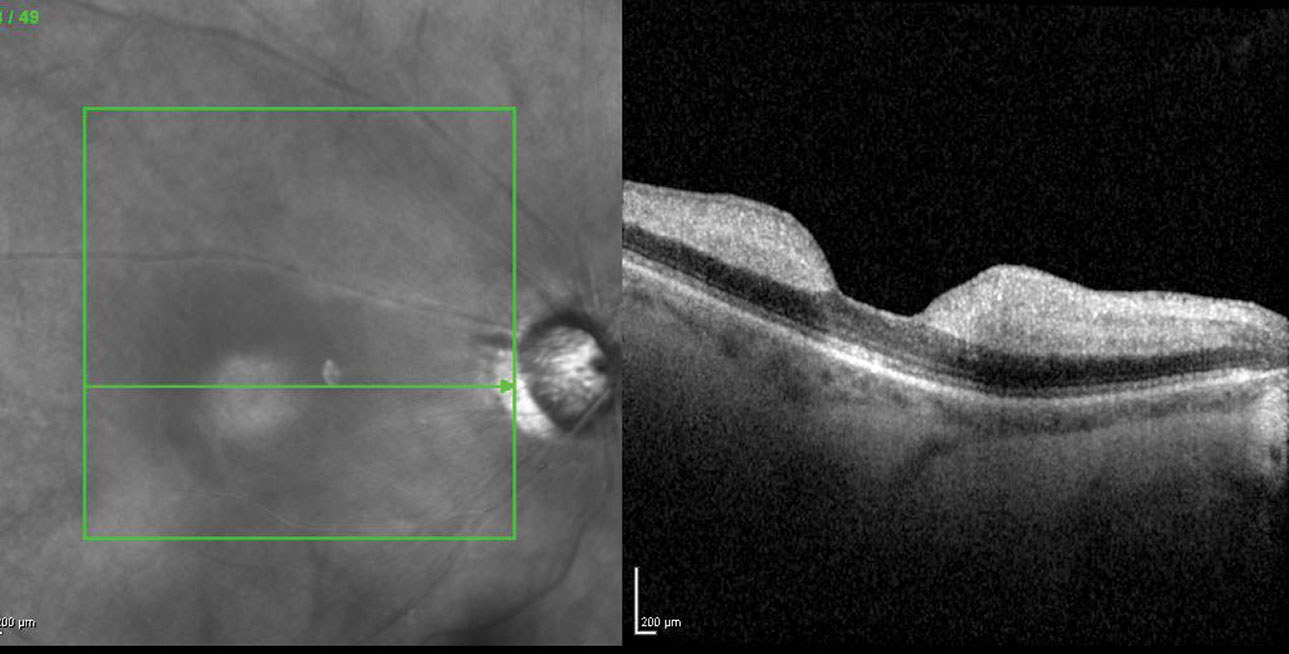 |
| Despite visual improvements in some patients, vision better than the legal blindness definition occurred in only about 5% of cases. Photo: Diana Shechtman, OD. Click image to enlarge. |
For ocular ischemic events such as central retinal artery occlusion (CRAO), every second counts. After about four to six hours, the visual prognosis is poor. With a lack of sufficient evidence supporting any single therapeutic option, researchers sought to learn more about the presenting characteristics and natural history of this blinding condition to gain insight for potential reperfusion therapies. They characterized initial CRAO presentation and followed retinal thickness changes over time using optical coherence tomography (OCT). Their findings, published recently in the American Journal of Ophthalmology, showed that patients present quickly after having symptoms but it’s rare to achieve good vision, despite some visual gains.
The retrospective study included 145 eyes of 144 patients (mean age 69). On average, patients presented within 1.6 days, with 19% of patients examined within 4.5 hours and 26% examined within six hours of vision loss.
The researchers reported that 19% of eyes had cilioretinal artery sparring (CLRA) and 32% of eyes had elevated inflammatory markers. A total of 47 eyes had final fluorescein angiography, and 33% of these eyes demonstrated reperfusion.
Mean initial VA was significantly better in CLRA sparing eyes than non-CLRA sparing eyes (1.68 vs. 2.53 logMAR) and final vision was also significantly better in CLRA sparing than non-CLRA sparing eyes (1.4 vs. 2.46 logMAR).
A third of patients in both groups had visual acuity improvements; 27% gained more than two lines of vision in the CLRA sparing group and 36% in the non-CLRA sparing group; 17% improved to better than 20/200 in the CLRA sparing group and 4% in non-CLRA sparing group; 11% of eyes—all in the non-CLRA sparing group—developed neovascularization.
The researchers reported that better visual acuity at presentation was associated with visual gains of two or more lines. OCT demonstrated progressive thinning, with greatest thinning occurring at six months, and stabilizing after.
“In some cases, visual recovery and reperfusion is possible, both with and without the presence of a cilioretinal artery,” the researchers explained in their AJO paper. “This data highlights the potential for visual gain following CRAO, especially with CLRA sparing. This data set can serve as a comprehensive baseline analysis for future interventional trials.”
| Click here for journal source. |
Hoyek S, Yuan M, Bejjani R, et al. Multimodal imaging characteristics and correlation to outcomes in patients with CRAO presenting to a large academic center. Am J Ophthalmol 2024. [Epub ahead of print]. |


